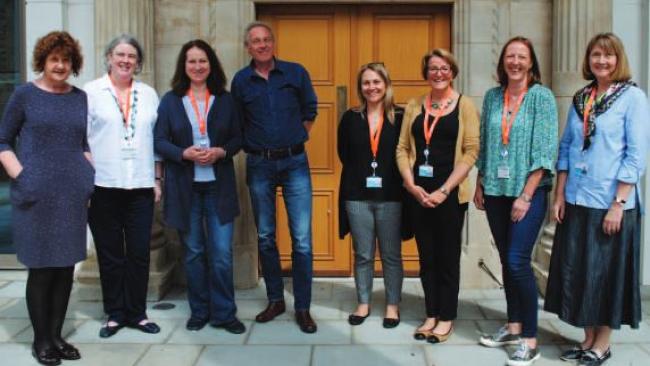
Laurence Sterne
Laurence Sterne (1713-1768) achieved celebrity late in life as the author of the humorous novel Tristram Shandy and other works.
ÔÇ£I well rememberÔÇØ says Tristram Shandy, in Laurence SterneÔÇÖs hugely popular comic novel of the same name, ÔÇ£when my father went up along with me to enter my name at ╠└═À╠§È¡┤┤ in ****, it was a matter of just wonder with my worthy tutor and two or three fellows of that learned society that a man who knew not so much as the names of his tools ÔÇô the elements of Logick and Rhetorick were so blended up in him ÔÇô should be able to work after that fashion with themÔÇØ.
Family background
Laurence SterneÔÇÖs great grandfather Richard Sterne had been Master of ╠└═À╠§È¡┤┤ from 1634 to 1643 and again, briefly, in 1660. His grandfather Simon had been a Fellow Commoner, though he did not take a degree; he left to marry a Yorkshire heiress. His uncle, Jacques, had held one of the scholarships that his grandfather had founded at Jesus, as did LaurenceÔÇÖs older cousin Richard, Laurence himself, and two younger cousins.
So, Laurence was one of four members of the fourth generation of Sternes to come to the College. His schoolmaster Nathan Sharpe had been at Jesus too: he had entered as a sizar in 1692. It was only LaurenceÔÇÖs own father Roger who had not been at the College. He had instead joined the army, and died while Laurence was still at school. It was his older cousin Richard who arranged for him to come to the College and gave him an allowance of ┬ú30 a year.
At ╠└═À╠§È¡┤┤
Laurence was almost 20 when he joined the College in November 1733. Except for having been severely ill, probably with tuberculosis, very little is known about his time at the College. Between 1733 and 1737, when Sterne graduated and was ordained deacon, the community was very small, with no more than 30 students and rarely more than the three or four Fellows in residence.
For most of his time as an undergraduate SterneÔÇÖs tutor was Lynford Caryll, who had himself entered Jesus as a poor orphan, had been given a Rustat scholarship. He went on to become a Fellow, then Master - the first, and for the next 120 years, the only former student of the College to occupy the post. Sterne remembered Caryll kindly, writing in a letter more than 30 years later:
ÔÇ£He used to let me have my way when I was under his direction, and that showed his sense, for I was born to travel out of the common road and to get aside from the highway path, and he had sense enough to see it, and not to trouble me with trammels.ÔÇØ
A friendship
Sterne made one lifelong friend while at Jesus: John Hall, who arrived aged 17 as a Fellow Commoner in Sterne's second year and was already the owner of a country estate. Hall was four years younger than Sterne, which may help to explain why the two orphans - one rich, one poor - so rapidly became close friends.
Hall became a minor and markedly eccentric poet. He was for many years SterneÔÇÖs neighbour at his Yorkshire house which he had named ÔÇÿCrazy CastleÔÇÖ, which inspired ÔÇÿCrazy TalesÔÇÖ (1762). More than 30 years after they first met, Hall was with Sterne in his final illness.
Sterne as a clergyman
Graduating in January 1737, Sterne found a curacy at St Ives in Huntingdonshire, less than 15 miles from Cambridge. He was ordained deacon in March and left the College to take up his duties on Easter Day. His stay at St Ives was brief: within the year he obtained a curacy looking after a parish in the West Riding of Yorkshire.
SterneÔÇÖs return to Yorkshire brought him back into the notice of his uncle Jacques, who was now archdeacon of Cleveland. Jacques soon ensured that his nephew was given a parish of his own, eight miles north of York. Laurence was able to live in York and to enter into its social life, engage in some political journalism, court his future wife, and begin to acquire a reputation as a popular and effective preacher.
Literary achievement
Sterne made brief visits to the College in the summers of 1740 and 1741. It was almost another 20 years before the first two volumes of the nine volume Tristram Shandy were to appear, taking the English and French reading public by storm and making its country parson author a centre of attention in the fashionable social world of London, and ultimately the subject of one of Sir Joshua ReynoldsÔÇÖ most memorable portraits.











